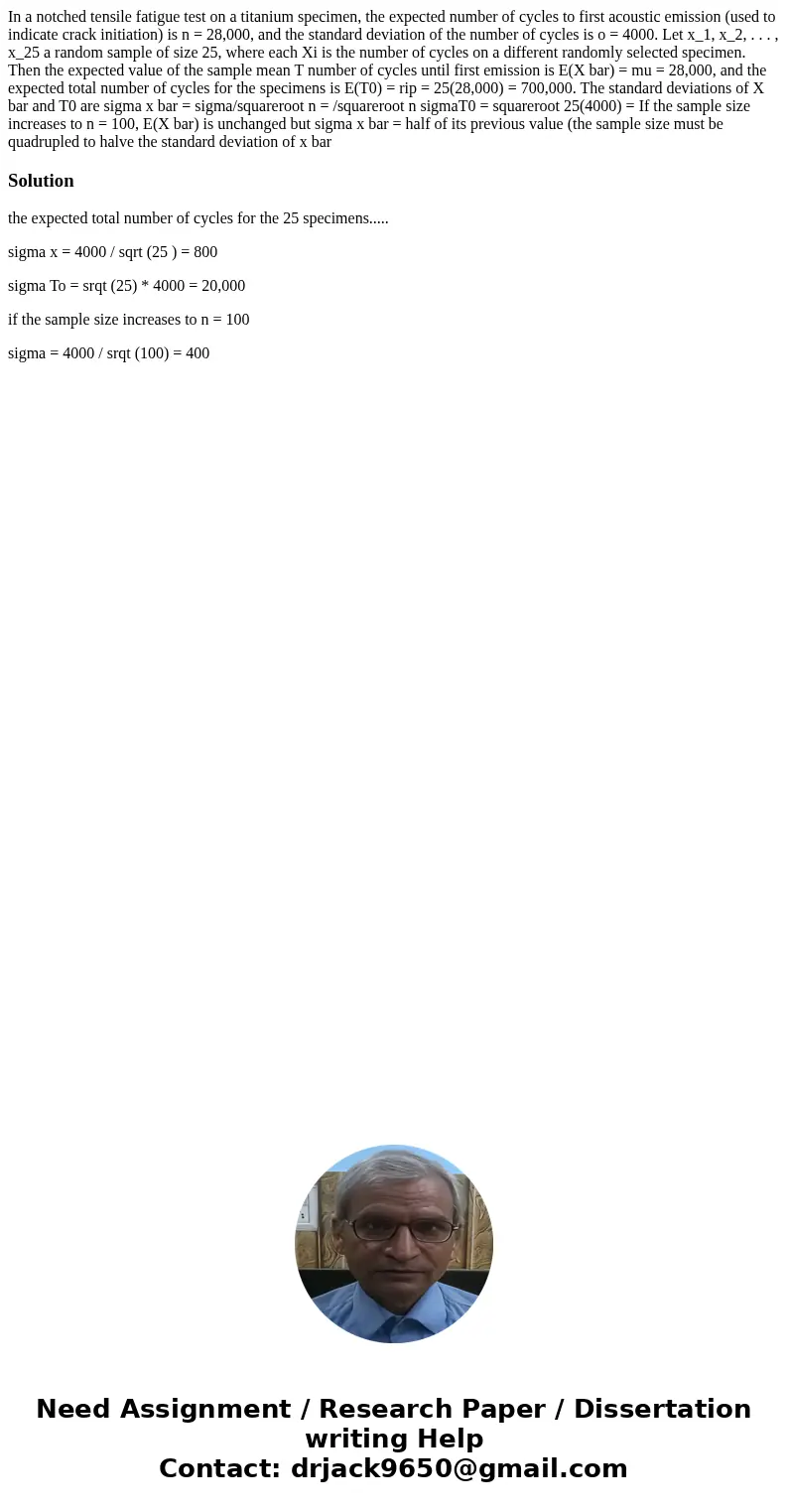In a notched tensile fatigue test on a titanium specimen the
In a notched tensile fatigue test on a titanium specimen, the expected number of cycles to first acoustic emission (used to indicate crack initiation) is n = 28,000, and the standard deviation of the number of cycles is o = 4000. Let x_1, x_2, . . . , x_25 a random sample of size 25, where each Xi is the number of cycles on a different randomly selected specimen. Then the expected value of the sample mean T number of cycles until first emission is E(X bar) = mu = 28,000, and the expected total number of cycles for the specimens is E(T0) = rip = 25(28,000) = 700,000. The standard deviations of X bar and T0 are sigma x bar = sigma/squareroot n = /squareroot n sigmaT0 = squareroot 25(4000) = If the sample size increases to n = 100, E(X bar) is unchanged but sigma x bar = half of its previous value (the sample size must be quadrupled to halve the standard deviation of x bar
Solution
the expected total number of cycles for the 25 specimens.....
sigma x = 4000 / sqrt (25 ) = 800
sigma To = srqt (25) * 4000 = 20,000
if the sample size increases to n = 100
sigma = 4000 / srqt (100) = 400

 Homework Sourse
Homework Sourse